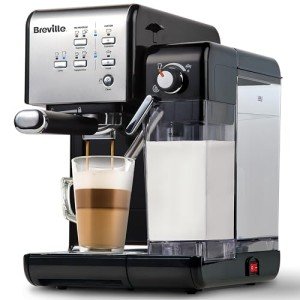The Reasons You Shouldn't Think About The Need To Improve Your Dual Boiler Espresso Machines
Understanding Dual Boiler Espresso Machines: A Comprehensive Guide
Espresso is an art as much as it is a science. For coffee lovers and baristas alike, accomplishing the best shot of espresso requires precision and control over brewing variables. Among the most effective methods to accomplish this precision is through making use of dual boiler espresso machines. This post explores the functionality, advantages, and considerations of dual boiler espresso machines for both newbies and skilled coffee connoisseurs.
What is a Dual Boiler Espresso Machine?
A dual boiler espresso machine features two separate boilers: one for brewing espresso and the other for steaming milk. This design enables the user to brew coffee and steam milk concurrently, accomplishing optimum temperature level control for both procedures. This is vital for developing lattes, cappuccinos, and macchiatos, where both active ingredients are important.
Table 1: Key Components of Dual Boiler Espresso Machines
Element
Function
Espresso Boiler
Warms water to the perfect brewing temperature (around 190 ° F)
. Steam Boiler
Heats up water to a higher temperature (around 250 ° F) for steaming milk.
PID Controller
Regulates the temperature level of the boilers for precision developing.
Group Head
Where the coffee premises sit and hot water travels through.
Steam Wand
Delivers steam to froth milk.
Benefits of Dual Boiler Espresso Machines
1. Synchronised Brewing and Steaming
The most substantial advantage of dual boiler espresso machines is the capability to brew espresso and steam milk at the very same time. Commercial Espresso Machines is especially advantageous in busy environments, such as coffee shops, where speed and quality are vital.
2. Consistent Temperature Control
Dual boiler machines often feature sophisticated PID (Proportional Integral Derivative) controllers that maintain a constant temperature throughout the developing procedure. Consistency is vital in espresso making to make sure the best extraction, thus boosting taste and aroma.
3. Personalization and Versatility
With two separate boilers, users can tailor the temperature settings for both espresso brewing and milk steaming. This indicates various types of coffee, such as lighter or darker roasts, can be prepared completely to suit specific taste profiles.
4. Perfect for Advanced Techniques
For those interested in latte art or other innovative strategies, a dual boiler espresso machine provides the versatility to deal with different milk textures while likewise extracting espresso. This flexibility makes it an attractive choice for baristas who wish to refine their abilities.
5. Longevity and Durability
Many dual boiler machines are constructed with high-quality materials created for durability. They are typically made from stainless-steel and feature durable parts, making them a worthwhile investment for anybody serious about coffee.
Downsides of Dual Boiler Espresso Machines
In spite of their many advantages, dual boiler machines can have some drawbacks:
- Higher Cost: Dual boiler machines tend to be pricier than their single-boiler equivalents, which might not be appropriate for casual coffee drinkers.
- Size and Space: These machines may inhabit more countertop space than others, making them less perfect for small kitchen areas.
Table 2: Key Considerations When Choosing a Dual Boiler Espresso Machine
Factor to consider
Explanation
Budget
Dual boiler machines can range from ₤ 1,000 to over ₤ 4,000.
Size
Inspect your kitchen area space before buying.
Brand Reputation
Look for well-reviewed brand names with excellent consumer assistance.
Features
Consider what functions are vital (e.g., PID controller, volumetric options).
Maintenance
Some machines may need more regular maintenance than others.
FAQs
1. Are Espresso Machines With Grinder ?
Yes, they are worth the financial investment for serious coffee enthusiasts or professional baristas who value precision in espresso extraction and milk steaming.
2. How do I keep a dual boiler espresso machine?
Routine maintenance includes descaling the machine, cleaning the group head, and guaranteeing that the steam wand is complimentary of milk residue. Speak with the maker's manual for particular guidelines.
3. Can I use a dual boiler espresso machine for other developing methods?
Typically, dual boiler machines are developed primarily for espresso. Nevertheless, they can typically brew quality drip coffee and other styles with the ideal settings and adjustments.
4. What brands are known for their dual boiler machines?
Some respectable brand names include La Spaziale, Breville, and ECM. Each brand has its own unique features and rates.
5. What is the average lifespan of a dual boiler espresso machine?
With proper care and maintenance, a dual boiler machine can last over a decade, making it a long-lasting investment for coffee lovers.
Dual boiler espresso machines represent the pinnacle of espresso-making technology, combining art and science into one compact device. While they require a higher initial financial investment and more counter top space, the advantages they use— such as simultaneous developing and steaming, exact temperature level control, and toughness— make them perfect for serious coffee lovers. Understanding the functions, advantages, and considerations for these machines will allow consumers to make informed decisions and elevate their coffee brewing experience. Whether in your home or in a hectic café, a dual boiler machine can genuinely enhance the art of espresso.
